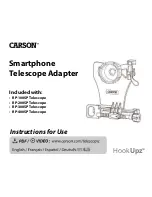
4. Towing inFormaTion
imPortAnt informAtion regArding tHe toWing of VeHicles WitH AutomAtic trAnsmission And four WHeel driVe
VeHicles.
4.1.
Before towing a four wheel drive vehicle or a vehicle with automatic transmission it is essential to consult the
manufacturer's handbook for the vehicle to be towed to check the correct towing procedure.
the correct procedure will vary
from vehicle to vehicle depending on the configuration of the transmission. (in some cases certain 4Wd
vehicles cannot be towed with all four wheels on the ground and will have to be transported on a trailer). failure to observe the correct
procedure could result in severe damage to the vehicle’s transmission.
4.2.
many automatic transmissions require the engine to be active in order to drive a pump that provides lubrication to the transmission.
if the transmission is turned by the road wheels without the engine running, permanent damage could be done to the transmission
due to lack of lubrication. this could also apply to the secondary gearbox on a four wheel drive vehicle.
4.3.
four wheel drive systems are designed to run in tandem with the engine. if the engine is off but the transmission is driven at speed
by the road wheels the mismatch in speed between components within the gearboxes could also result in permanent damage to the
transmission.
4.4.
it is usually possible to tow four wheel drive vehicles with manual transmission as the engine can be disconnected from the primary
gearbox. However, the road wheels may still be driving a secondary gearbox. the manufacturer will state in which drive position
the secondary gearbox should be placed. and will recommend a maximum towing speed. A towing distance and/or time limit may also
be imposed by the manufacturer.
4.5.
some four wheel vehicles are fitted with devices to disconnect the hubs and/ or driveshafts especially for towing purposes.
4.6.
consult the manufacturer's handbook before reversing with a four wheel drive vehicle attached or a vehicle with automatic
transmission.
4.7.
rememBer,
AlWAYs folloW tHe VeHicle mAnufActurers recommendAtions for tHe VeHicle to be toWed.
5. aSSemBlY
5.1.
remove contents from packing and check to ensure everything is correct and undamaged. should you experience any problems contact
your supplier immediately.
5.2.
fit the two hook sections (A&b) into the centre section (c) and locate section A only with pin (d). retain pin with clip (e).
5.3.
Alternative pin holes are provided in the centre section for horizontal or vertical tow eyes so that the hooks (g & J) are always
square to the eyes.
5.4.
use
5.5.
Position vehicles so that the distance between the towing eyes is approximately 1.8 metres.
5.6.
slide back and rotate hook gate (f) clear and then fit hook (g) through vehicle towing eye. if towing eye is horizontal, the hook must have
the gap downwards, as shown in diagram.
5.7.
Push the hook gate (f) up against the tow eye and retain it in position with pin (H) and clip (e).
5.8.
similarly fit and retain hook (J) to the towing eye of the second vehicle sliding section (b) into, or out of, section (c) as necessary
5.9.
carefully move towing vehicle backwards or forwards to align pin holes in sections (b & c). locate with pin (d). retain pin with clip (e).
tPK2522 | issue 3 (H, 1, 3, f) 10/11/17
Original Language Version
© Jack sealey limited





















